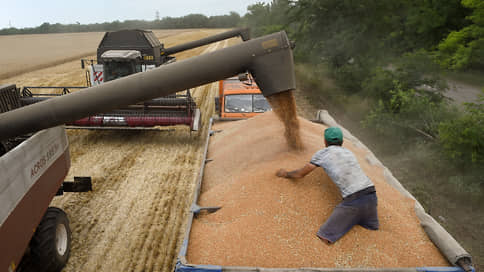The government approved a new mechanism for quoting grain exports
[ad_1]

The government approved a new grain export quota mechanism, which provides for the possibility of exporters voluntarily waiving tariff quotas or part of them, introducing a reduction factor for those who did not choose the declared volumes, and distributing an additional part of the quota among exporters based on the results of a new selection. The initiative is explained by the desire of the authorities to prevent a reduction in grain exports – plans for next year are 60 million tons.
The document approved at the end of last week by the White House describes the modification of the distribution mechanism between grain quota exporters. Such export (except for supplies to the EAEU) restrictions have been applied annually since 2021. Within the framework of the quota, grain exports are subject to a “floating” duty, depending on the price situation, outside it – a protective one, which is annually approved by the Ministry of Agriculture. In 2023, the size of the tariff quota is 25.5 million tons.
As follows from Decree No. 985 dated June 15, 2023, now exporters will be able to refuse allocated quotas or part of them on a declarative basis – in 2023, five working days are allotted for this from the date of publication of the decree. In the future, applications for refusal will be accepted from 1 to 20 April. The importance of waiving the quota for exporters who risk not having time to export the declared volumes is explained by the fact that from the next season, when distributing the main part of the quota, a reduction coefficient equal to the percentage of the quota sample in the previous season can be applied to them.
This year, the volume of quotas released after “refusals” will be distributed among other exporters by June 30. Starting from 2024, the tariff quota will immediately be divided into “basic” and “additional” parts. The volume of the first will, as before, be distributed according to the historical principle. The additional volume from 2024 will consist of three parts: the volume that will be “released” after applying the reduction factor, the part formed from “refusals”, and 10% of the total tariff quota. This part will be distributed from February 15 to June 30, when stocks and actual shipments are determined.
Only exporters who have already received the bulk of the quota will be able to claim additional volumes. “Together with the Ministry of Industry and Trade, we will evaluate the unlicensed balance of the main part of the quota of each exporter at the time of application, and based on this balance and the volume specified in the export contract, an additional part will be distributed,” said Dmitry Patrushev, head of the Ministry of Agriculture. According to his estimates, the mechanism should help to significantly increase the degree of sampling of quotas and encourage active exporters. Despite the difficulties with payments for grain supplies and problems with storage and logistics, according to the results of the agricultural year 2022/23, the Russian Federation is likely to fulfill the stated goals of exporting 55–60 million tons of grain from the country (see Kommersant of June 5). The new rules should prevent a reduction in exports, which, given the carry-over stocks of grain, may once again overstock the market – Agricultural Deputy Prime Minister Victoria Abramchenko has already estimated export plans for the next agricultural year as “about 60 million tons.”
According to the Ministry of Agriculture, the new version of the quota distribution rules does not limit competition in the market: “From the beginning of each season and until February 14, grain exports from Russia are carried out by all market participants freely, and quotas are valid only in the second half of the season, from February 15 to June 30 . At the same time, the main and additional parts of the tariff quota are distributed according to the historical principle on the basis of indicators, including exports without quotas from July 1 to November 30 – and any existing market participant has the opportunity to receive a quota volume commensurate with their capabilities.
[ad_2]
Source link






